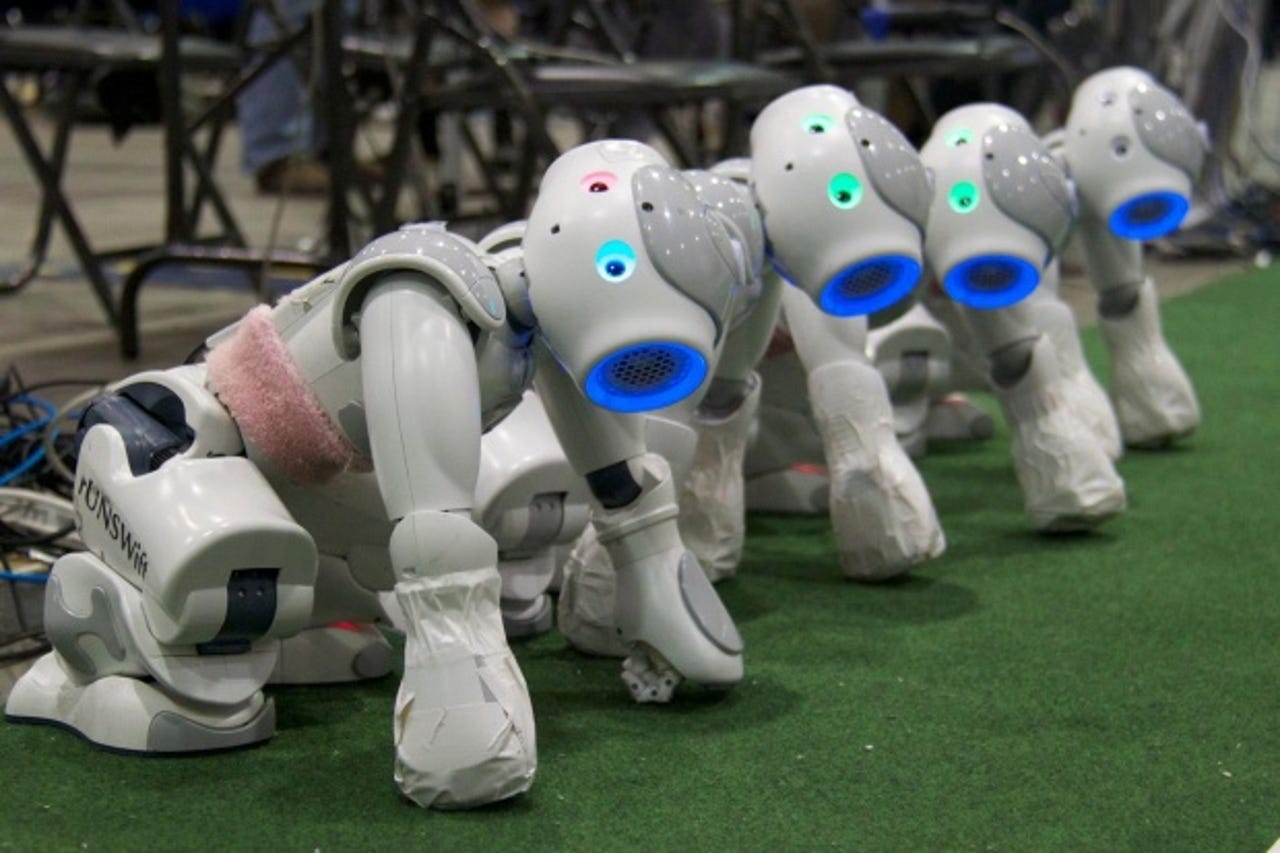UNSW takes out bronze medal in world RoboCup match

Software engineers from the University of New South Wales (UNSW) have taken an army of robots to Mexico to battle it out with international universities, and have come back with the bronze medal from the 2012 RoboCup competition.

While the battle isn't a fight to the death, but rather a friendly soccer match, there's still plenty of action on the field, with the robots completely autonomous from their human masters, except for when misbehaving players are removed.
UNSW's robotic team, named rUNSWift, won all but two of its matches, with the opposing team in some cases unable to break through the Aussie team's defence to make a single goal. The rUNSWift team only lost against the first- and second-place winners, UT Austin Villa (University of Texas at Austin, US) and B-Human (University of Bremen, Germany) and, even then, only by a single goal.
The robots themselves have come a long way from when they first began. First-year PhD candidate Sean Harris, who flew to Mexico for his second RoboCup representing UNSW, recalled that the robotic soccer games from just four years ago were almost frustrating.
"In 2008, the first year using the Nao platform, none of the robots could walk properly and nearly all of the games were 0-0 draws," he said.
"One of the only goals in the tournament was because a robot ran out of batteries, fell over and knocked the ball into its own net," he said. "This year, we saw games with as many as 13 goals being scored, so it's definitely come a long way."
The robots are now advanced enough that robotic goalies block, squat and even dive for balls heading for the goal posts. There are times where robots shunt each other, knocking each other down, but there's no room for faking injuries for these plastic players. The robots are coordinated enough that they can self-right themselves without any human intervention.
The robots are also able to communicate with each other, sending information about what they can see, identifying the ball or an opponent and using that information to form gameplay strategies.
"The robots are essentially talking to each other and can make informed group decisions about things. They have a belief model about where the ball should be, and where their teammates and opponents are positioned, and they move based on this," Harris said.
Of course, not everything goes to plan, and at times the playing field is reduced to robots falling over each other, which is entertaining for its own sake, and reassuring that players like Ronaldo will still have at least a few years left in their careers.
Other videos of rUNSWift's previous matches are available on UNSW Computing's YouTube channel.